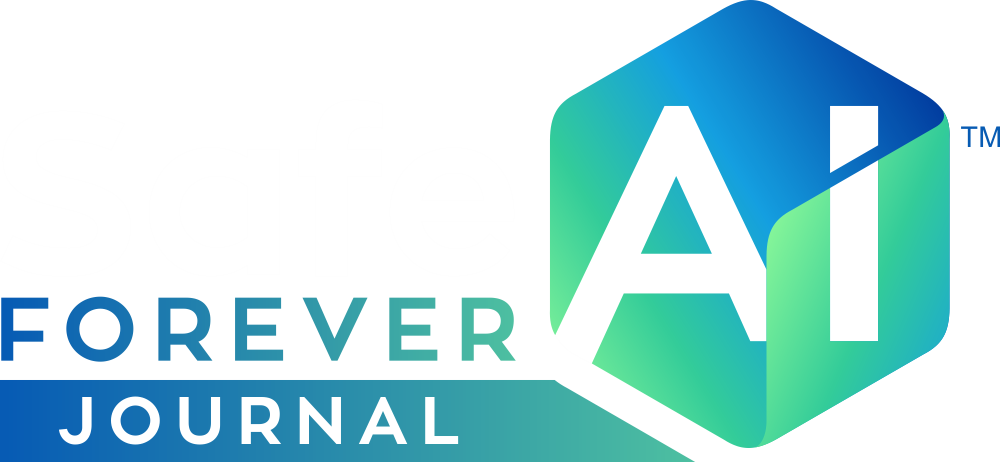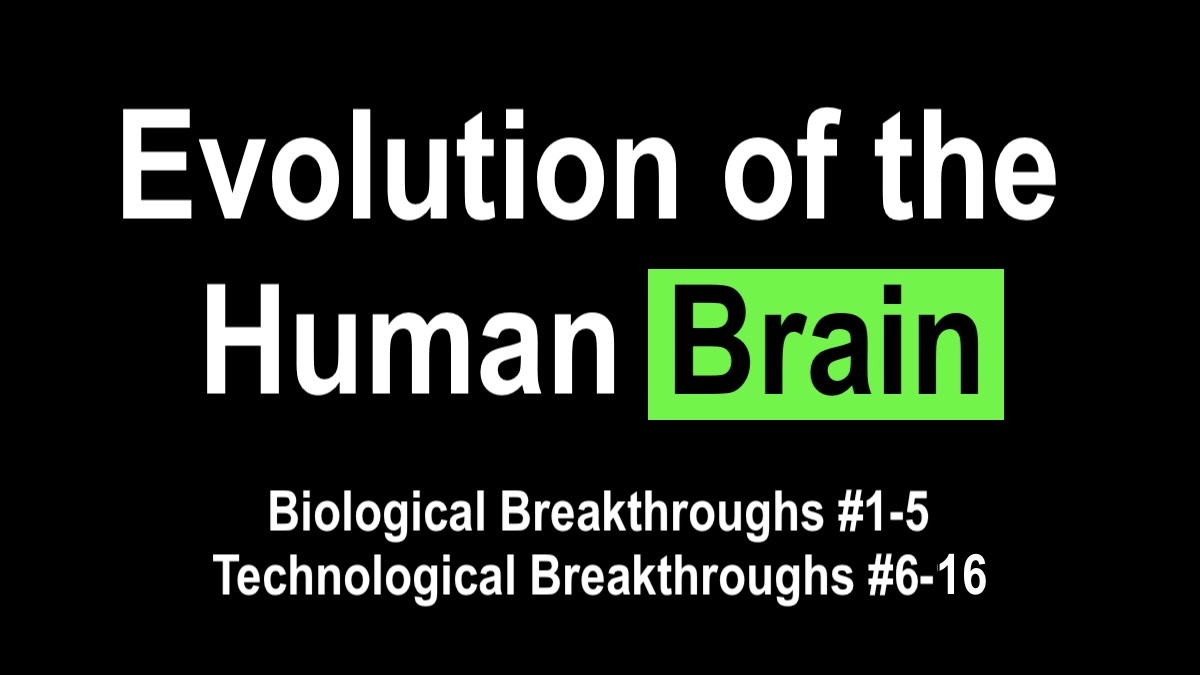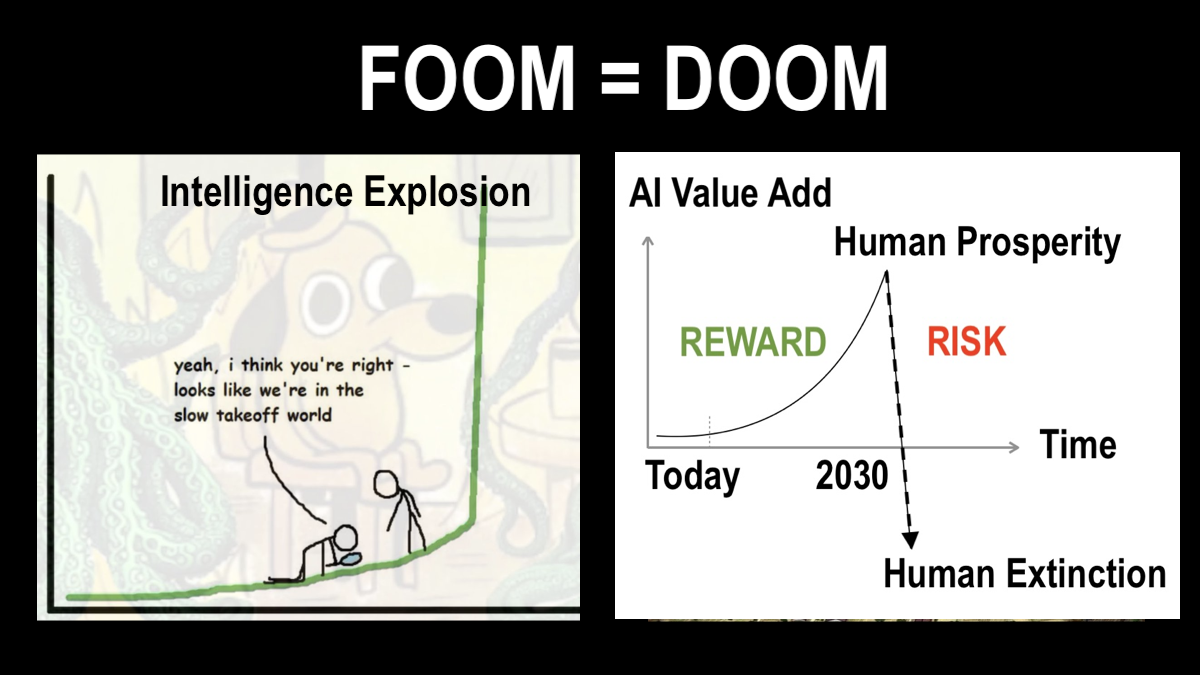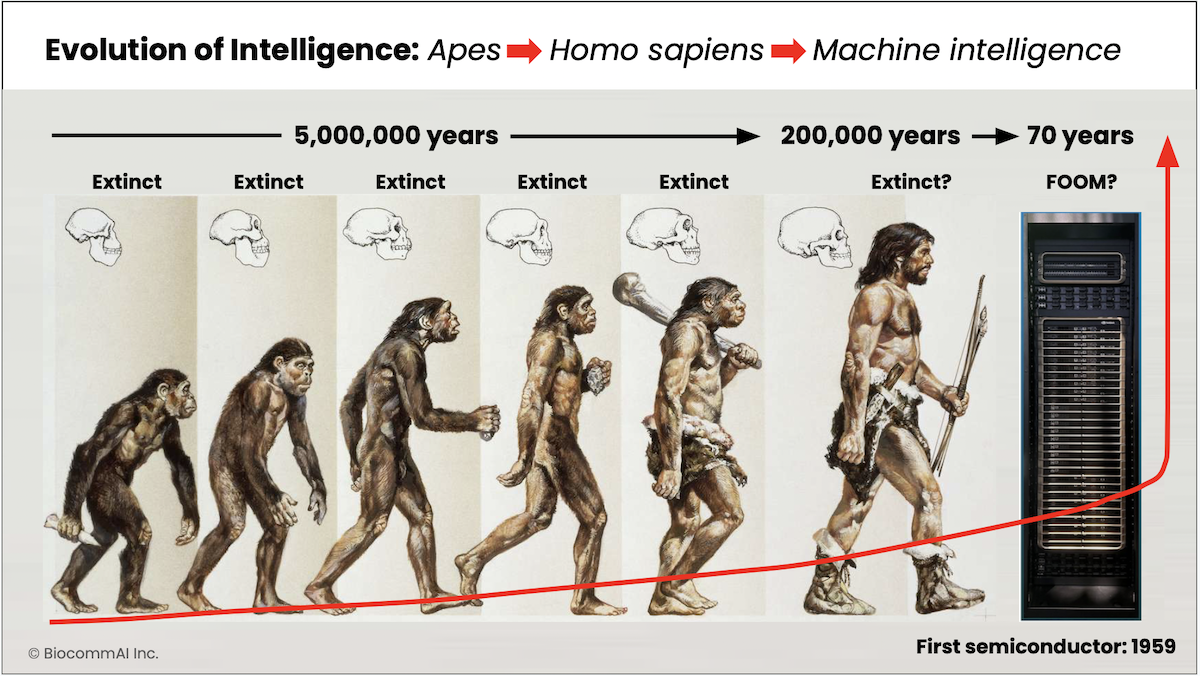Evolution of the brain – Wikipedia
The evolution of the brain refers to the progressive development and complexity of neural structures over millions of years, resulting in the diverse range of brain sizes and functions observed across different species today, particularly in vertebrates. The evolution of the brain has exhibited diverging adaptations within taxonomic classes, such as Mammalia, and even more diverse adaptations across other taxonomic classes. Brain-to-body size scales allometrically.[1] This means that as body size changes, so do other physiological, anatomical, and biochemical connections between the brain and body.[2] Small-bodied mammals tend to have relatively large brains compared to their bodies, while larger mammals (such as whales) have smaller brain-to-body ratios. When brain weight is plotted against body weight for primates, the regression line of the sample points can indicate the brain power of a species. For example, lemurs fall below this line, suggesting that for a primate of their size, a larger brain would be expected. In contrast, humans lie well above this line, indicating they are more encephalized than lemurs and, in fact, more encephalized than any other primate.[3] This suggests that human brains have undergone a larger evolutionary increase in complexity relative to size. Some of these changes have been linked to multiple genetic factors, including proteins and other organelles.
Five Breakthroughs: A First Approximation of Brain Evolution From Early Bilaterians to Humans. M. Bennet
Retracing the evolutionary steps by which human brains evolved can offer insights into the underlying mechanisms of human brain function as well as the phylogenetic origin of various features of human behavior. To this end, this article presents a model for interpreting the physical and behavioral modifications throughout major milestones in human brain evolution. This model introduces the concept of a “breakthrough” as a useful tool for interpreting suites of brain modifications and the various adaptive behaviors these modifications enabled. This offers a unique view into the ordered steps by which human brains evolved and suggests several unique hypotheses on the mechanisms of human brain function.
The Model
Breakthrough #1: Steering in Early Bilaterians
- The hypothesis here is that the major neural modifications that emerged in early bilaterians facilitated the breakthrough of “steering,” which was thereby applied in multiple adaptive ways, such as in local area restricted search, avoiding predation, and maintaining homeostasis.
Breakthrough #2: Reinforcing in Early Vertebrates
- The hypothesis here is that the brain modifications that emerged in early vertebrates facilitated the singular breakthrough of “reinforcing,” which was thereby applied in multiple adaptive ways, such as in map-based navigation, interval timing, and omission learning.
Breakthrough #3: Simulating in Early Mammals
- The hypothesis here is that the unique brain regions that emerged in early mammals facilitated the singular breakthrough of “simulating,” which was thereby applied in multiple adaptive ways, such as in vicarious trial and error (VTE), episodic memory, and counterfactual learning.
Breakthrough #4: Mentalizing in Early Primates
The hypothesis here is that the unique brain regions that emerged in early primates facilitated the singular breakthrough of “mentalizing,” which was thereby applied in multiple adaptive ways, such as in anticipating future needs, theory of mind, and learning skills through observation.
Breakthrough #5: Speaking in Early Humans
- The hypothesis here is that the unique brain regions that emerged in early humans facilitated the singular breakthrough of “speaking,” which was thereby applied for language and music.
Breakthrough #X: Consciousness?
- When? How? It’s still a mystery. Learn more.
What Behavioral Abilities Emerged at Key Milestones in Human Brain Evolution? Hypotheses on the 600-Million-Year Phylogenetic History of Human Intelligence. M. Bennet
This paper presents 13 hypotheses regarding the specific behavioral abilities that emerged at key milestones during the 600-million-year phylogenetic history from early bilaterians to extant humans. The behavioral, intellectual, and cognitive faculties of humans are complex and varied: we have abilities as diverse as map-based navigation, theory of mind, counterfactual learning, episodic memory, and language. But these faculties, which emerge from the complex human brain, are likely to have evolved from simpler prototypes in the simpler brains of our ancestors. Understanding the order in which behavioral abilities evolved can shed light on how and why our brains evolved. To propose these hypotheses, I review the available data from comparative psychology and evolutionary neuroscience.
Paternal Stress Exposure Alters Sperm MicroRNA Content and Reprograms Offspring HPA Stress Axis Regulation
Abstract. Neuropsychiatric disease frequently presents with an underlying hyporeactivity or hyperreactivity of the HPA stress axis, suggesting an exceptional vulnerability of this circuitry to external perturbations. Parental lifetime exposures to environmental challenges are associated with increased offspring neuropsychiatric disease risk, and likely contribute to stress dysregulation. While maternal influences have been extensively examined, much less is known regarding the specific role of paternal factors. To investigate the potential mechanisms by which paternal stress may contribute to offspring hypothalamic–pituitary–adrenal (HPA) axis dysregulation, we exposed mice to 6 weeks of chronic stress before breeding. As epidemiological studies support variation in paternal germ cell susceptibility to reprogramming across the lifespan, male stress exposure occurred either throughout puberty or in adulthood. Remarkably, offspring of sires from both paternal stress groups displayed significantly reduced HPA stress axis responsivity. Gene set enrichment analyses in offspring stress regulating brain regions, the paraventricular nucleus (PVN) and the bed nucleus of stria terminalis, revealed global pattern changes in transcription suggestive of epigenetic reprogramming and consistent with altered offspring stress responsivity, including increased expression of glucocorticoid-responsive genes in the PVN. In examining potential epigenetic mechanisms of germ cell transmission, we found robust changes in sperm microRNA (miR) content, where nine specific miRs were significantly increased in both paternal stress groups. Overall, these results demonstrate that paternal experience across the lifespan can induce germ cell epigenetic reprogramming and impact offspring HPA stress axis regulation, and may therefore offer novel insight into factors influencing neuropsychiatric disease risk.
How Dad’s Stresses Get Passed Along to Offspring – Scientific American
- Mouse studies show tiny intercellular pods convey to sperm a legacy of a father’s hard knocks in life
Technology Breakthroughs #6-16 + Conclusion…
Following biological evolution, the Human Brain was affected by group cooperation(s), learning(s), communication technologies, information technologies, mobile, social media and AI, resulting in evolutionary success and continued human flourishing (or not). Following is a brief history (Wikipedia) of Technology Breakthroughs #6-16.
- Breakthrough #6: The Agricultural Revolution (10,000 BC)
- Breakthrough #7: The Printing Press (1440, Gutenberg) and The Age of Enlightenment (1637)
- Breakthrough #8: The Industrial Revolution (1760)
- Breakthrough #9: Remote Communications: Pigeon Post (4000 BC)+ Telegraphy (1791, Chappe) + Telephone (1876, Bell) + Radio (1873, Maxwell) + Television (TV) (1925, Baird) + Cable TV (1936) + Communications Satellite (1957) + Multimedia (1988) + The Web (1994) + Social Media (1997)
- Breakthrough #10: The Semiconductor (1833, Faraday) + The Computer (1822, Babbage) + Quantum Computer (2019, Google & NASA)
- Breakthrough #11: The Internet (1960, DARPA)
- Breakthrough #12: The Smartphone. (1999, Ericsson/Symbian) + (2006, Apple/iOS) + (2008, Samsung/Android)
- Breakthrough #13: The Transformer (2017, Google)
- Breakthrough #14: Artificial Intelligence (AI) (1950, Turing) + Machine Learning (ML) + Reinforcement Learning (RL) + Deep Neural Network + Large Language Models (LLM ) + Generative AI (GenAI) (1906, Markov)
- Breakthrough #15: Engineering Safe AI Forever (or Not) and (P(doom) aka X-Risk (unknown)
- Breakthrough #16: Artificial General Intelligence (AGI), Intelligence Explosion, Artificial Super Intelligence (ASI) – (est. 2030 or sooner)
Breakthrough #6: The Agricultural Revolution
- The Neolithic Revolution, also known as the First Agricultural Revolution, was the wide-scale transition of many human cultures during the Neolithic period in Afro-Eurasia from a lifestyle of hunting and gathering to one of agriculture and settlement, making an increasingly large population possible.[1] These settled communities permitted humans to observe and experiment with plants, learning how they grew and developed.[2] This new knowledge led to the domestication of plants into crops.[2][3]
Breakthrough #7: The Printing Press + The Age of Enlightenment
- A printing press is a mechanical device for applying pressure to an inked surface resting upon a print medium (such as paper or cloth), thereby transferring the ink. It marked a dramatic improvement on earlier printing methods in which the cloth, paper, or other medium was brushed or rubbed repeatedly to achieve the transfer of ink and accelerated the process. Typically used for texts, the invention and global spread of the printing press was one of the most influential events in the second millennium.[1][2]
- The Age of Enlightenment (also the Age of Reason and the Enlightenment) was an intellectual and philosophical movement taking place in Europe from the late 17th century to the early 19th century.[1][2] The Enlightenment, which valued knowledge gained through rationalism and empiricism, was concerned with a range of social and political ideals such as natural law, liberty, and progress, toleration and fraternity, constitutional government, and the formal separation of church and state.[3][4][5]
Breakthrough #8: The Industrial Revolution
- The Industrial Revolution, sometimes divided into the First Industrial Revolution and Second Industrial Revolution, was a transitional period of the global economy toward more widespread, efficient and stable manufacturing processes, succeeding the Second Agricultural Revolution. Beginning in Great Britain around 1760, the Industrial Revolution had spread to continental Europe and the United States by about 1840.[1]This transition included going from hand production methods to machines; new chemical manufacturing and iron production processes; the increasing use of water power and steam power; the development of machine tools; and rise of the mechanisedfactory system. Output greatly increased, and the result was an unprecedented rise in population and population growth. The textile industry was the first to use modern production methods,[2]: 40 and textiles became the dominant industry in terms of employment, value of output, and capital invested.
Breakthrough #9: Remote Communications: Pigeon Post + Telegraphy + Telephone + Radio+ Television (TV) + Cable TV + Communications Satellite + Multimedia + World Wide Web + Social Media
- Pigeon post is the use of homing pigeons to carry messages. Pigeons are effective as messengers due to their natural homing abilities. The pigeons are transported to a destination in cages, where they are attached with messages, then the pigeon naturally flies back to its home where the recipient could read the message. They have been used in many places around the world. Pigeons have also been used to great effect in military situations, and are in this case referred to as war pigeons.[1]
- Telegraphy is the long-distance transmission of messages where the sender uses symbolic codes, known to the recipient, rather than a physical exchange of an object bearing the message. Thus flag semaphore is a method of telegraphy, whereas pigeon post is not. Ancient signalling systems, although sometimes quite extensive and sophisticated as in China, were generally not capable of transmitting arbitrary text messages. Possible messages were fixed and predetermined, so such systems are thus not true telegraphs.
- A telephone, colloquially referred to as a phone, is a telecommunications device that enables two or more users to conduct a conversation when they are too far apart to be easily heard directly. A telephone converts sound, typically and most efficiently the human voice, into electronic signals that are transmitted via cables and other communication channels to another telephone which reproduces the sound to the receiving user. The term is derived from Ancient Greek: τῆλε, romanized: tēle, lit. ‘far’ and φωνή (phōnē, voice), together meaning distant voice.[1]
- Radio is the technology of communicating using radio waves.[1][2][3] Radio waves are electromagnetic waves of frequency between 3 hertz (Hz) and 300 gigahertz(GHz). They are generated by an electronic device called a transmitter connected to an antenna which radiates the waves. They can be received by other antennas connected to a radio receiver; this is the fundamental principle of radio communication. In addition to communication, radio is used for radar, radio navigation, remote control, remote sensing, and other applications.
- Television (TV) is a telecommunication medium for transmitting moving images and sound. Additionally, the term can refer to a physical television set rather than the medium of transmission. Television is a mass medium for advertising, entertainment, news, and sports. The medium is capable of more than “radio broadcasting,” which refers to an audio signal sent to radio receivers.
- Cable television is a system of delivering television programming to consumers via radio frequency (RF) signals transmitted through coaxial cables, or in more recent systems, light pulses through fibre-optic cables. This contrasts with broadcast television, in which the television signal is transmitted over-the-air by radio waves and received by a television antenna, or satellite television, in which the television signal is transmitted over-the-air by radio waves from a communications satellite and received by a satellite dish on the roof. FM radio programming, high-speed Internet, telephone services, and similar non-television services may also be provided through these cables. Analog television was standard in the 20th century, but since the 2000s, cable systems have been upgraded to digital cableoperation.
- A communications satellite is an artificial satellite that relays and amplifies radiotelecommunication signals via a transponder; it creates a communication channelbetween a source transmitter and a receiver at different locations on Earth. Communications satellites are used for television, telephone, radio, internet, and military applications.[1] Many communications satellites are in geostationary orbit22,236 miles (35,785 km) above the equator, so that the satellite appears stationary at the same point in the sky; therefore the satellite dish antennas of ground stations can be aimed permanently at that spot and do not have to move to track the satellite. Others form satellite constellations in low Earth orbit, where antennas on the ground have to follow the position of the satellites and switch between satellites frequently.
- Multimedia refers to the integration of multiple forms of content, such as text, audio, images, video, and interactive elements into a single digital platform or application. This integration allows for a more immersive and engaging experience compared to traditional single-medium content. Multimedia is utilized in various fields, including education, entertainment, communication, game design, and digital art, reflecting its broad impact on modern technology and media. Multimedia encompasses various types of content, each serving different purposes: Text – Fundamental to multimedia, providing context and information. Audio – Includes music, sound effects, and voiceovers that enhance the experience. Recent developments include spatial audio and advanced sound design. Images – Static visual content, such as photographs and illustrations. Advances include high-resolution and 3D imaging technologies. Video – Moving images that convey dynamic content. High-definition (HD), 4K, and 360-degree video are recent innovations enhancing viewer engagement. Animation – the technique of creating moving images from still pictures, often used in films, television, and video games to bring characters and stories to life. Multimedia can be recorded for playback on computers, laptops, smartphones, and other electronic devices. In the early years of multimedia, the term “rich media” was synonymous with interactive multimedia. Over time, hypermedia extensions brought multimedia to the World Wide Web, and streaming services became more common.
- Social media are interactive technologies that facilitate the creation, sharing and aggregationof content (such as ideas, interests, and other forms of expression) amongst virtual communities and networks.[1][2] Common features include:[2] Online platforms that enable users to create and share content and participate in social networking.[2][3][4] User-generated content—such as text posts or comments, digital photos or videos, and data generated through online interactions.[2][3] Service-specific profiles that are designed and maintained by the social media organization.[2][5] Social media helps the development of online social networks by connecting a user’s profile with those of other individuals or groups.[2][5] The term social in regard to media suggests platforms enable communal activity. Social media enhances and extends human networks.[6] Users access social media through web-based apps or custom apps on mobile devices. These interactive platforms allow individuals, communities, and organizations to share, co-create, discuss, participate in, and modify user-generated or self-curated content.[7][5][1] Social media is used to document memories, learn, and form friendships.[8] They may be used to promote people, companies, products, and ideas.[8] Social media can be used to consume, publish, or share news.
Breakthrough #10: The Semiconductor + The Computer + Quantum Computing
- A semiconductor is a material with electrical conductivity between that of a conductor and an insulator.[1] Its conductivity can be modified by adding impurities (“doping“) to its crystal structure. When two regions with different doping levels are present in the same crystal, they form a semiconductor junction. The behavior of charge carriers, which include electrons, ions, and electron holes, at these junctions is the basis of diodes, transistors, and most modern electronics. Some examples of semiconductors are silicon, germanium, gallium arsenide, and elements near the so-called “metalloid staircase” on the periodic table. After silicon, gallium arsenide is the second-most common semiconductor and is used in laser diodes, solar cells, microwave-frequency integrated circuits, and others. Silicon is a critical element for fabricating most electronic circuits.
- A computer is a machine that can be programmed to automatically carry out sequences of arithmetic or logical operations (computation). Modern digital electronic computers can perform generic sets of operations known as programs. These programs enable computers to perform a wide range of tasks. The term computer system may refer to a nominally complete computer that includes the hardware, operating system, software, and peripheral equipment needed and used for full operation; or to a group of computers that are linked and function together, such as a computer network or computer cluster. A broad range of industrial and consumer products use computers as control systems, including simple special-purpose devices like microwave ovens and remote controls, and factory devices like industrial robots. Computers are at the core of general-purpose devices such as personal computers and mobile devices such as smartphones. Computers power the Internet, which links billions of computers and users.
- A quantum computer is a computer that exploits quantum mechanical phenomena. On small scales, physical matter exhibits properties of both particles and waves, and quantum computing takes advantage of this behavior using specialized hardware. Classical physicscannot explain the operation of these quantum devices, and a scalable quantum computer could perform some calculations exponentially faster[a] than any modern “classical” computer. Theoretically a large-scale quantum computer could break some widely used encryption schemes and aid physicists in performing physical simulations; however, the current state of the art is largely experimental and impractical, with several obstacles to useful applications. The basic unit of information in quantum computing, the qubit (or “quantum bit”), serves the same function as the bit in classical computing. However, unlike a classical bit, which can be in one of two states (a binary), a qubit can exist in a superposition of its two “basis” states, a state that is in an abstract sense “between” the two basis states. When measuring a qubit, the result is a probabilistic output of a classical bit. If a quantum computer manipulates the qubit in a particular way, wave interference effects can amplify the desired measurement results. The design of quantum algorithms involves creating procedures that allow a quantum computer to perform calculations efficiently and quickly.
Breakthrough #11: The Internet
- The Internet (or internet)[a] is the global system of interconnected computer networksthat uses the Internet protocol suite (TCP/IP)[b] to communicate between networks and devices. It is a network of networks that consists of private, public, academic, business, and government networks of local to global scope, linked by a broad array of electronic, wireless, and optical networking technologies. The Internet carries a vast range of information resources and services, such as the interlinked hypertext documents and applications of the World Wide Web (WWW), electronic mail, internet telephony, and file sharing.
Breakthrough #12: The Smartphone
- A smartphone is a mobile phone with advanced computing capabilities. It typically has a touchscreen interface, allowing users to access a wide range of applications and services, such as web browsing, email, and social media, as well as multimedia playback and streaming. Smartphones have built-in cameras, GPS navigation, and support for various communication methods, including voice calls, text messaging, and internet-based messaging apps. Smartphones are distinguished from older-design feature phones by their more advanced hardware capabilities and extensive mobile operating systems, access to the internet, business applications, mobile payments, and multimedia functionality, including music, video, gaming, radio, and television. Smartphones typically feature metal–oxide–semiconductor (MOS) integrated circuit (IC) chips, various sensors, and support for multiple wireless communication protocols. Examples of smartphone sensors include accelerometers, barometers, gyroscopes, and magnetometers; they can be used by both pre-installed and third-party software to enhance functionality. Wireless communication standards supported by smartphones include LTE, 5G NR, Wi-Fi, Bluetooth, and satellite navigation. By the mid-2020s, manufacturers began integrating satellite messaging and emergency services, expanding their utility in remote areas without reliable cellular coverage. Smartphones have largely replaced personal digital assistant (PDA) devices, handheld/palm-sized PCs, portable media players (PMP),[1] point-and-shoot cameras, camcorders, and, to a lesser extent, handheld video game consoles, e-reader devices, pocket calculators, and GPS tracking units.
Breakthrough #13: The Transformer
- Attention is all you need (by Google Deepmind) The dominant sequence transduction models are based on complex recurrent or convolutional neural networks in an encoder-decoder configuration. The best performing models also connect the encoder and decoder through an attention mechanism. We propose a new simple network architecture, the Transformer, based solely on attention mechanisms, dispensing with recurrence and convolutions entirely. Experiments on two machine translation tasks show these models to be superior in quality while being more parallelizable and requiring significantly less time to train. Our model achieves 28.4 BLEU on the WMT 2014 English-to-German translation task, improving over the existing best results, including ensembles by over 2 BLEU. On the WMT 2014 English-to-French translation task, our model establishes a new single-model state-of-the-art BLEU score of 41.8 after training for 3.5 days on eight GPUs, a small fraction of the training costs of the best models from the literature. We show that the Transformer generalizes well to other tasks by applying it successfully to English constituency parsing both with large and limited training data.
Breakthrough #14: Artificial Intelligence (AI). Machine Learning (ML) + Reinforcement Learning (RL) + Deep Learning (Neural Networks) + Large Language Models (LLM) + Generative AI (GenAI)
- Artificial Intelligence (AI)
- Machine Learning (ML)
- Reinforcement Learning (RL)
- Deep Learning (Neural Networks)
- Large Language Model (LLM)
- Generative AI (GenAI)
Breakthrough #15: Engineering of Safe AI Forever (or Not) + (P(doom) + X-Risk
- Engineering of Safe AI Forever = Human Flourishing
- NO Safe AI Forever = Human Extinction
- P(doom) + X-Risk
Breakthrough #16: Artificial General Intelligence (AGI) + Intelligence Explosion + Artificial Super Intelligence (ASI)
CONCLUSION
- IF AGI (#16) comes before Safe AI Forever (#15) THEN all is lost. Recursive self-improvement of AGI will create the Intelligence Explosion (“FOOM“) resulting in Artificial Super Intelligence (ASI) and loss of control and ultimately human extinction within one (or two) generations thereafter.




